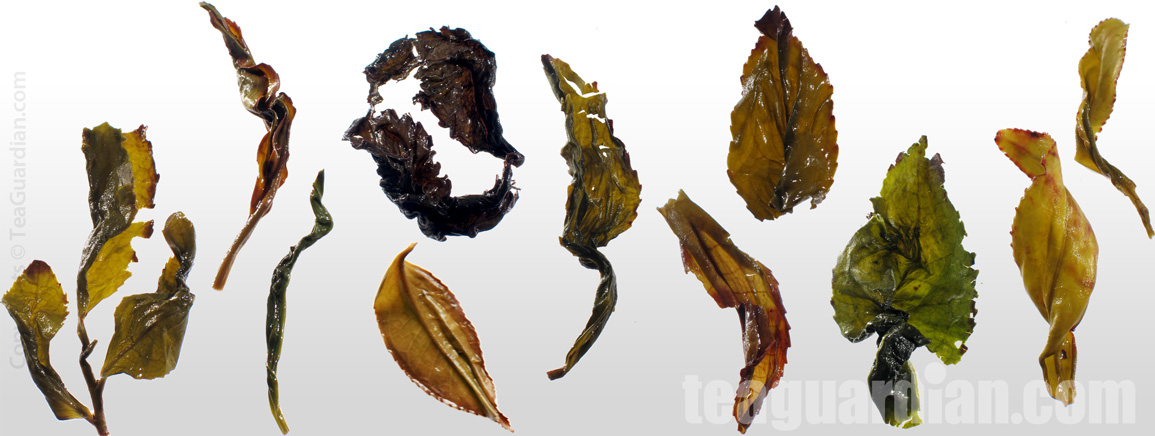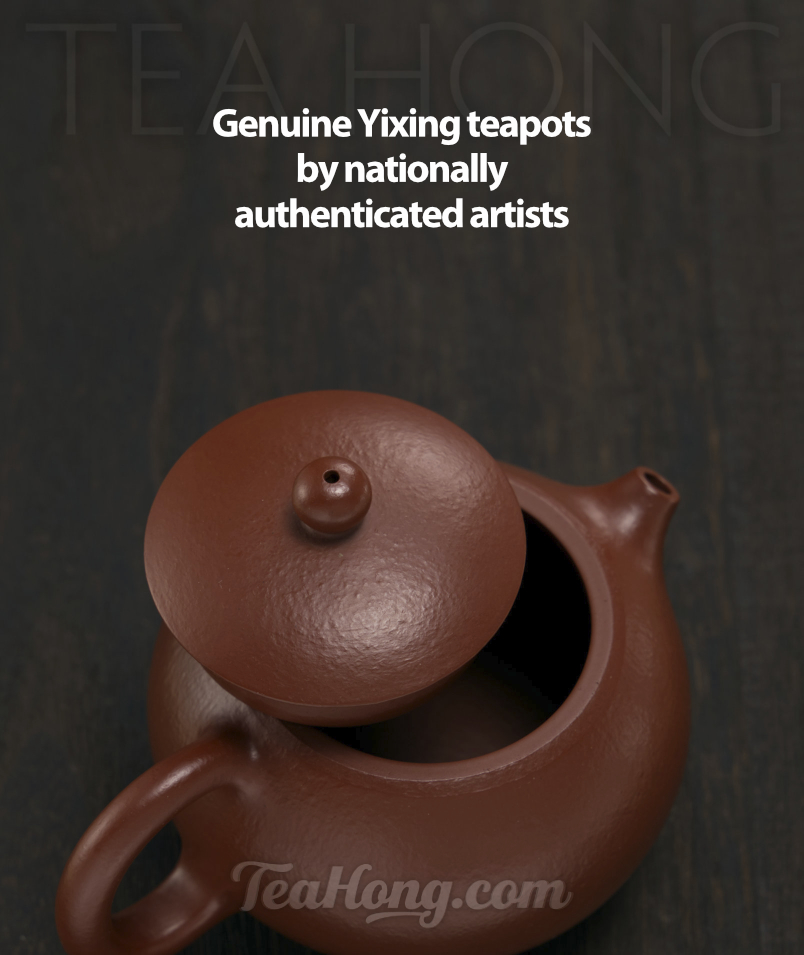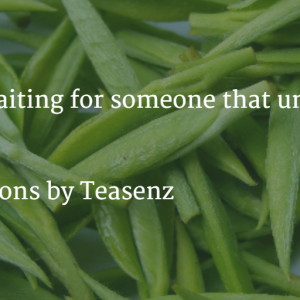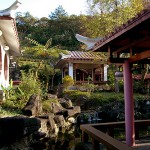Oolongs: the Gran Cru of Teas

The infused leaves of a few different oolongs, revealing the different appearances of the original raw leaves and different processing effects on the leaves.
most diverse tastes and aromas
Fine oolongs make up a tea category of the most diversely distinctive tastes and aromas. Theirs are by far the most potent, full-bodied, and enjoyable in all fine teas. The various production styles and large range of cultivars give them unique combinations of flavonoids, carbohydrates, amino acids, sugars and essential oils that are not found in other categories. These substances are tea’s building blocks of gastronomic qualities.
The aroma of an oolong can be warm and nutty like freshly baked cookies, or it can have more bouquet fragrance than a bunch of flowers. Its body can be full and fruity, or strong and dry. Or subtle and soft, or deep and tantalising. The texture can range from velvety rich to tinkly silky. This is indisputably the most colourful of all tea categories.
From Alishan to Wuyi-shan is like day and night
It can manifest itself as the gentle and mild Paochong from Taiwan, or complex and playful Phoenix Honey Orchid, or strong and stout Wuyi Iron Buddha.
Go deeper into a region, say for example Phoenix, one can find the most bouquet aroma of any natural teas Snow Orchid, or the subtle and silky Shiguping Oolong, or the beautifully full body of a Song Cultivar.
These are only a small sampling from that region. Each region holds gems so uniquely construct the multi-faceted character of oolongs from its land and masterful hands.
a category defined as partially “fermented” teas
The formation of the complex taste substances in oolongs is the result of the carefully executed processing that manipulates how and which part of the tealeaves go through various degrees of enzymatic oxidation, in addition to various other controlled withering and resting steps. It is hard to say whether the tea is only oxidised. Many other elements come into play to make the final biochemistry.
Some people in the trade have developed the generalised concept of oolong being a “partially fermented” or “partially oxidised” tea. This is the most widely adopted and yet very confusing concept. We shall discuss a little more about this in subsequent articles.
Traditional practices differ hugely from the automated processes not only in the resultant taste quality, but also in the great diversity of tea varieties. Quality in production attentiveness and expertise is naturally proportional to the quality of the final product.
- Song Cultivar Huangzhi Xiang Dancong used to be the most popular and acclaimed of all classic style Phoenix dancongs. Yet most producers now process it to the bouquet finish to highlight its kumquat accents.
- Tieguanyin, Floral Style. 清香型鐵觀音 This most famous of all Minnan oolongs 閩南烏龍. It can come in many styles, differing in depth of oxidation, greenness, and levels of baking. This is a higher quality with standard oxidation and green finish 20561 | 8865
- Yancha Shuixian 岩茶水仙, or Rock Tea Water Lily, aka Sacred Lily, a variety of Wuyi oolong with a wide range of quality of styles 20052 | 8971 2007
Three common forms of oolongs (from the left)
- traditional tightly twisted (curly leaf sticks), such as this Phoenix oolong (Huangzhi Xiang Dancong);
- semi-bead style (some say tadpole form), such as this Anxi oolong (Tieguanyin);
- and loosely twisted, such as this Wuyi oolong (Yancha Shuixian).
oolongs or wulongs?
Confusingly, the original Chinese term for oolong is not only a category name but also a name used by some particular tea varieties, e.g. Lishan oolong. There are some cultivars which names contain that word too. For example, Qingxin ( Chin Shin ) wulong, Aijiao wulong etc. In this site, we shall use the English spelling “oolong” for both the tea category and tea varieties, and the spelling “wulong” for tea cultivars.
The original term, if pronounced in the Mandarin dialect and romanised in the pinyin system, produces the English word wulong. However, since tea is popularised way before Mandarin was and even more before pinyin even existed, the word oolong has somehow existed through the casual and evolutionary conclusion from various romanisation efforts from the dialects of the southern parts of China — where the tea category began and has always been the centre of it.
Since the term of tea varieties reaches out to the market much more predominantly than the idea of cultivar, we follow the trend to lower any possible confusion.
In the scope of cultivars, however, we have adopted the more modern term. One reason being the same plants can be used to make oolong varieties and into teas of any of the other categories — most popularly blacks, whites and greens. It is therefore important to set the stage for further discussions of such topics by using a term that is distinctly different from the tea variety term.
appearances
There are two main appearance styles for the tea: curly leaf sticks that are twisted longitudinally and semi bead style that the leaf is twisted into a curled-up tadpole. The former is the traditional style, the latter is only about 200 years new. Some people compressed certain oolongs to bars or bricks too.
The range of quality in this category is as huge as any other and we shall examine this topic in detail in this site.













